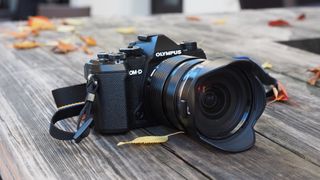The reasons why mirrorless cameras can be considered ‘better’ than smartphones are quite clear. The sensors are bigger and produce better image quality and you can change lenses for ultra-wide or telephoto shots and more. You have more manual control for advanced shooting techniques, and larger sensors mean longer focal length lenses that bring shallower depth of field and a more filmic or cinematic look.
The best mirrorless cameras are easily capable of professional stills and video, of a quality that has probably broken the market for the best medium format cameras and even the best cinema cameras. However, this quality comes at a cost.
As for the humble smartphone, well, there seems to be an assumption that mirrorless cameras are clearly and by definition better in every way than the best camera phones, and that even a smartphone might be OK for beginners, anyone who is serious about their craft. must upgrade to mirrorless camera.
But no one talks about the ways in which mirrorless cameras are worse.
Bigger is not always better
I think, for a modern photographer or content creator, it’s only fair to point out not only what you’re getting when you go with a mirrorless camera, but also what you’re giving up:
1. Integrated cellular connectivity
With a phone you can share any photo via social media instantly. With a mirrorless camera, you experience all the pain of setting up Wi-Fi, the app, and juggling two devices for photo transfer, just to get where you were with a smartphone camera.
2. Computational imaging
On your phone you can shoot a panorama stitched seamlessly in real time. You can take noise-free photos in near darkness with exposure-blending night modes, you can take realistic HDR photos without clunky exposure bracketing and merges. Mirrorless cameras need to catch up.
3. A large and bright screen
The phone I’m holding now has a 6 inch screen; the mirrorless camera on my desk has a 3-inch screen. My phone is not just a camera, it is a device that I can also use for editing and viewing or ‘consuming’ my photos. My camera is just a capture tool.
4. Excellent shooting and editing apps
Your phone’s in-built camera comes with many different filters and effects, and you can get many inexpensive apps that combine advanced camera modes with great editing tools. My phone has Google’s excellent free Snapseed app, no longer available on desktop computers, and unmatched by any mirrorless camera.
5. No focus distraction
Much of the hoo-hah around the latest generation of mirrorless cameras surrounds the AI focusing systems. But the larger sensor and shallower depth of field create focus issues that smartphones don’t have.
6. Always have a pocket
I’m guessing that wherever you go, your phone goes with you. This is the ultimate go-anywhere camera that you always have with you. Even the best travel cameras are many times the size and often inconvenient to carry around, especially for relaxed social events or simple travel.
Phone fans will no doubt give me many more examples of phone advantages that I’ve forgotten, and mirrorless fans will no doubt chastise me for not championing ‘proper’ photography.
In fact, I consider myself a ‘proper’ photographer and almost everything I do is with a ‘proper’ camera. But that doesn’t blind me to the advantages of smartphones, and I wouldn’t be doing my job if I didn’t point out to any phone fan thinking about upgrading, that a mirrorless camera will do more yet… but it will also do less.
#sick #told #mirrorless #cameras #smartphone #upgrade

















Add Comment